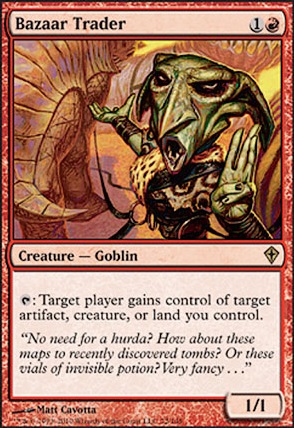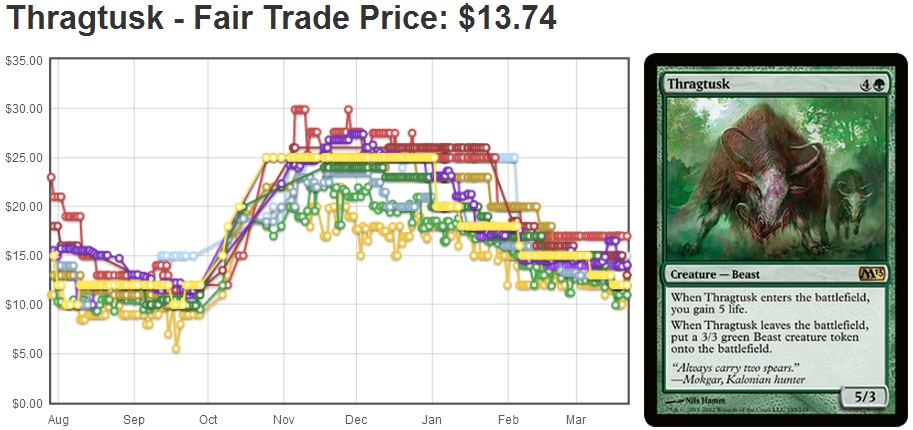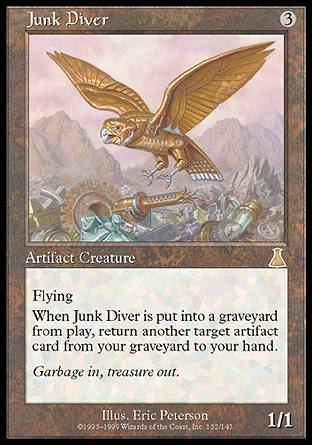
Many people are leery of buylisting their cards and selling them to stores and card dealers. Players are worried that they’re getting ripped off and not getting full market value for their cards; however, this is not always the case. There are numerous factors and situations many people fail to think about that can make buylisting your cards a great, profitable transaction.
Here are some reasons why it’s often best to sell your MTG cards to stores’ buylists.
One factor some people fail to consider when trying to sell their cards on eBay or TCGplayer is their fees. eBay charges a 9% total value fee in addition to PayPal charges of 2.9%+$0.30 per transaction. For comparison, TCGplayer charges 11%+$0.50 for a sale. In addition to those fees, you still have to mail out the item; even the cheapest mailing method of a regular envelope still costs $0.46 for the stamp, plus another $0.10 for the protective plastic top loader. Here’s a graph illustrating how much you pay in fees and shipping charges if you sell on these websites:

The horizontal (X) axis is how much the item sold for, and the vertical (Y) axis is the cost of the fees and shipping charges. For example, if you sold an item for $10, TCG’s transaction costs would come to $2.16, whereas eBay’s fees + shipping would cost you $2.05. The marked point on the graph is the spot where both websites charge the same amount of fees for the item sold; any item sold for $21.72 would cost you fees plus shipping of $3.45 at both websites. As is evident from the graph, eBay has lower fees relative to TCG on items cheaper than $21.72, whereas TCG has lower fees relative to eBay on items more expensive than that.
These fees eat into a huge portion of the expected profit from a card. I routinely see cards listed on eBay and TCG where the person would receive about the same or even more money if they just sold the card to a buylist from a store. For example, as you can view on mtgprice.com, Venser, Shaper Savant is selling on eBay for $15, and yet ChannelFireball has been buying them for over a month at $12. The fees for that transaction on eBay end up being $2.65, so you end up receiving $12.35 – essentially the same price you would receive from selling to a buylist, not to mention the 30% bonus if you choose to get paid in store credit! Also, the buylist has the added benefit that you don’t have to wait around for someone to buy your item. I can see from the price history of the card for March that people have sold copies of Venser, Shaper Savant for $12-$13, with a few even as low as $9.39 on eBay; if they had all sold to ChannelFireball, they would have made more money than they did on eBay.
It is also often worthwhile to sell your $1-$5 cards grouped all together to a buylist. If you want another way to look at the fees, you can view them as how much of a percent you’re paying on the item you sold:

This graph illustrates the percentage of fees paid relative to the item’s selling price. The X-axis is again how much the item sold for, and the Y-axis is percentage of the fees you paid relative to the cost of the item.
The most important thing to note is the inverse relationship between the fee percentage and your item value; as an item increases in value, the percent of fees relative to the item you pay decreases. This relationship is most relevant in items $20 and less; the percentage changes very quickly, especially for extremely low priced items. Yes, eBay is better than TCG for selling lower priced items, but if you think you want to sell a one dollar item there, think again – you’d have to pay fees and shipping costs of 98% of what you sold the item for! If you sold that item on TCG, you’d actually be losing money! Fees for selling a two dollar item on eBay would be at 55%, eating up over half of what you sold the card at. Even for a five dollar sale on eBay, fees and shipping still consume 29% of the sale price, leaving you with only $3.54 net income. As the item increases in value, the percentage of fees paid eventually levels off at around 12%-13% for both sites.
The moral of this story is that small value cards are often worth grouping together and selling to a buylist. Forgo the extra costs so the fees don’t eat you alive.

Another excellent opportunity to sell cards to a buylist arises when you know the price of a card is going to drop, and stores have not yet updated their buylist prices. For example, when the contents of the Gatecrash Event Deck were released, I knew the price of Thragtusk would plummet due to yet another reprinting. For over a week after that information had been released, Starcitygames was still buying Thragtusk at their old buylist price of $15. Fast forward a couple of months and sure enough, the price dropped, and now you can rebuy them for as little as $10. The lesson here is if you think the price of a card is going to go down, it’s often best to sell them right away even if it’s slightly under the market value, rather than trying to eke out every last cent of value out of the card and get stuck with it.
One last tidbit of advice: before you hit that confirm button to sell to an online buylist, visit your local store or dealer to see if they are willing to beat any of the prices; it’s a win-win situation. The store gets some cards they need, and you get a little bit more money for the cards you were willing to sell. I like to set the guideline at either getting an extra $0.25 or 10%, whichever is more, but you can decide for yourself whatever arbitrary criteria you want to follow.
I hope this guide helps you decide the merits of selling your cards to a buylist.
